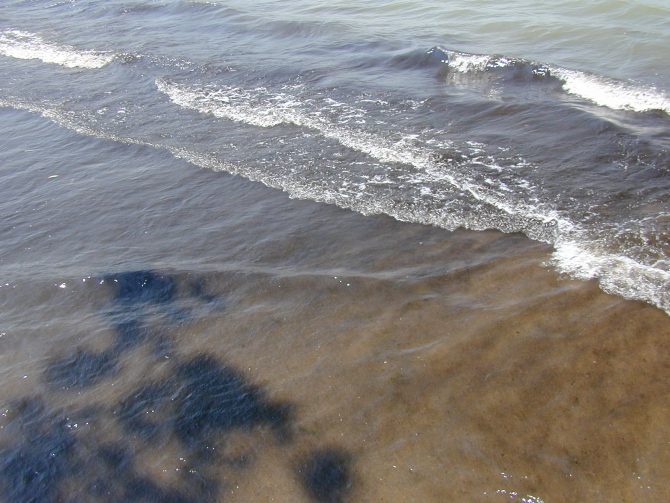NEWS: Could Ohio legislation help heal Lake Erie? A good step, but long journey ahead. #sb150
Posted by Jared Shepherd
- 4026 Views
- May 23rd, 2014
- in Miscellaneous
- No Comments
 |
| Hazardous algal bloom on Lake Erie, 2011. cleveland.com file photo. |
If a journey of a thousand miles begins with one step, think of Ohio Senate Bill 150 as a first step.
A cleveland.com story May 19 reported Ohio Governor John Kasich is preparing to sign a bill that could help control fertilizer phosphorus contributions to Lake Erie’s toxic-algae problems. That’s important, but what’s more important is where (and how far) we go from here.
About algae, phosphorus, and SB 150
First, let’s understand the problem.
The toxic green algae that has plagued Lake Erie in recent years may be a result of excessive amounts of phosphorus and nitrogen in the water. It negatively impacts fish and other aquatic life. There are many sources of phosphorus and nitrogen, including human waste, industrial processes, and commercial fertilizers used mainly in the agricultural industry.
SB 150, which has recently passed the State House and Senate unanimously, would require farmers who use commercial fertilizers to be certified by the state and encourage them to develop “nutrient management plans” to demonstrate they are working to control their land’s runoff.
SB 150, wastewater treatment, and Lake Erie
As a wastewater treatment agency, our key concern is the health of our lake, and algal blooms are a growing problem. If this bill can move Ohio towards addressing the phosphorus dilemma, that’s a good thing.
Where SB 150 is on target
This bill is an early first step. By requiring farmers to be certified to apply commercial fertilizer, it provides a record of which fertilizers are being used and in what quantities.
Where SB 150 misses the mark
 |
| Via USDA NRCS |
While the bill would allow a greater awareness of who is purchasing and applying fertilizers that might be contributing to phosphorus loads, much more data is required to develop a comprehensive control strategy: What non-point sources (like runoff) exist and what are their contributions to the problem? Can more data help us determine how to reduce phosphorus levels in the future and at what pace?
Returning to the “thousand-mile journey” analogy, SB 150 is a first step. Maybe it’s just tying the shoes. In either case, it’s important, but so much more work is required if we’re going to reach the goal.
Why it’s worth talking about
Wastewater treatment agencies monitor phosphorus very closely. Through our treatment processes last year, for example, we removed 745 tons of phosphorus, which is almost 90% of the total amount of phosphorus that entered our three treatment plants, a level that protects our lake and exceeds standards for water quality set by the Environmental Protection Agency.
Because we don’t remove all 100% of the phosphorus, what’s that impact on Lake Erie? Our three treatment plants treat about 250 million gallons of water every day and are responsible for about 2% of the total external phosphorus load entering Lake Erie.
So where is the rest of the phosphorus coming from? That’s something SB 150 does not address, but the answer is critical to any future plans.
Obviously, phosphorus is a naturally occurring element and is already present in our lake water. The issue is the ever-increasing volume from external sources like fertilizer.
What’s in the works and what it will mean
Lake Erie’s recent algal blooms have been a big concern since 2011, but since 2007 the Sewer District has been involved in state efforts to better understand the issue and possible solutions. That work continues to this day.
We also advocate elements of a broader bill, HB 490, also focused on the use of phosphorus-rich fertilizers contributing to algal blooms. While the bill has only recently been introduced, and includes language with which we disagree, it offers specific actions, incentives and penalties regarding the use of phosphorus in agriculture that is worth further evaluation.
But Lake Erie’s water quality challenges go beyond fertilizers and phosphorus: Combined sewer overflows—discharges of sewage and stormwater from older sewer systems during heavy storms—also affect water quality.
Our Project Clean Lake and its 25-year $3 billion plan to reduce annual combined sewer overflow volumes by 4 billion gallons is well underway. An investment of that magnitude can be jeopardized if made without a full understanding of the phosphorus and nutrient issues at play.




